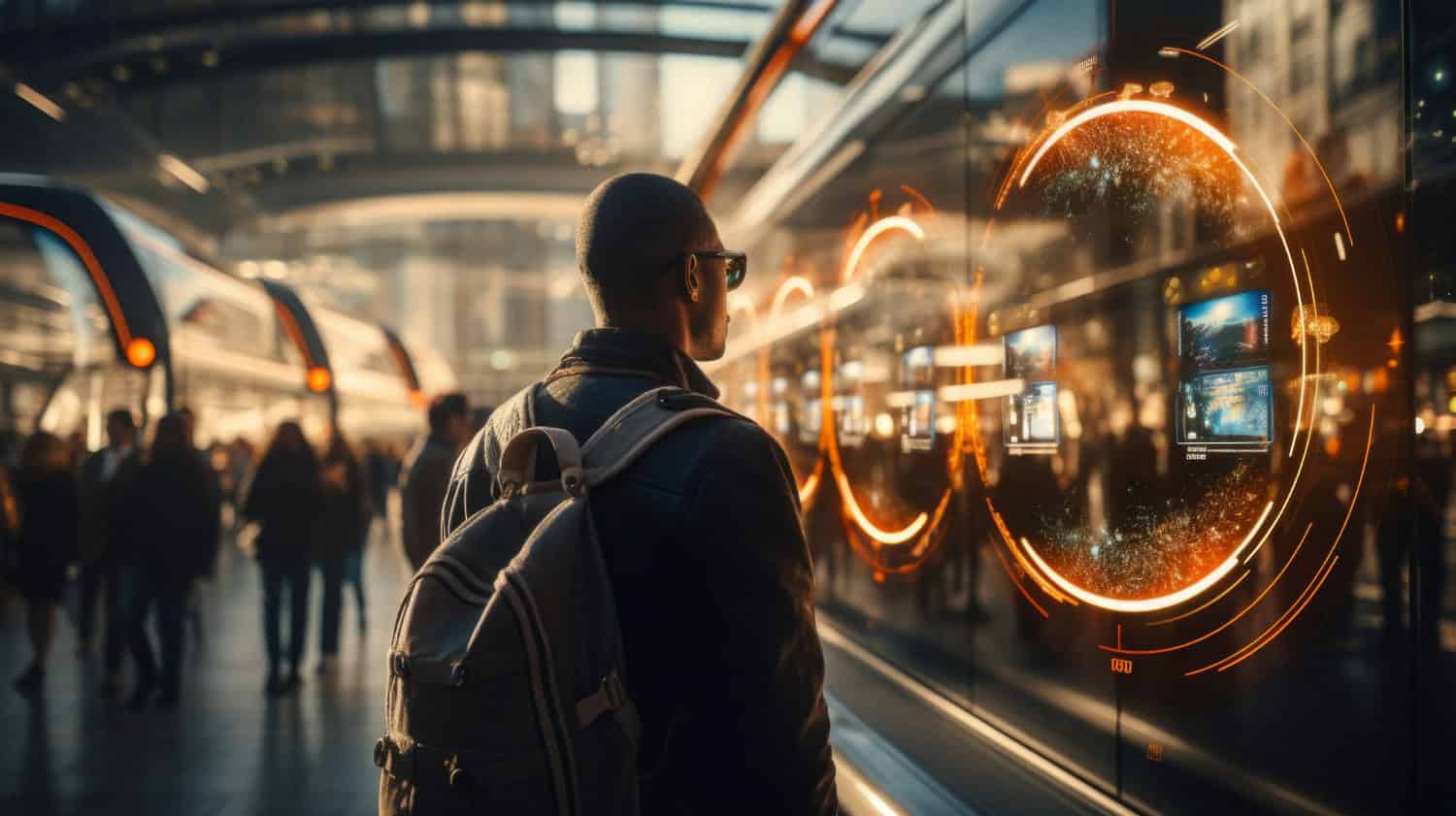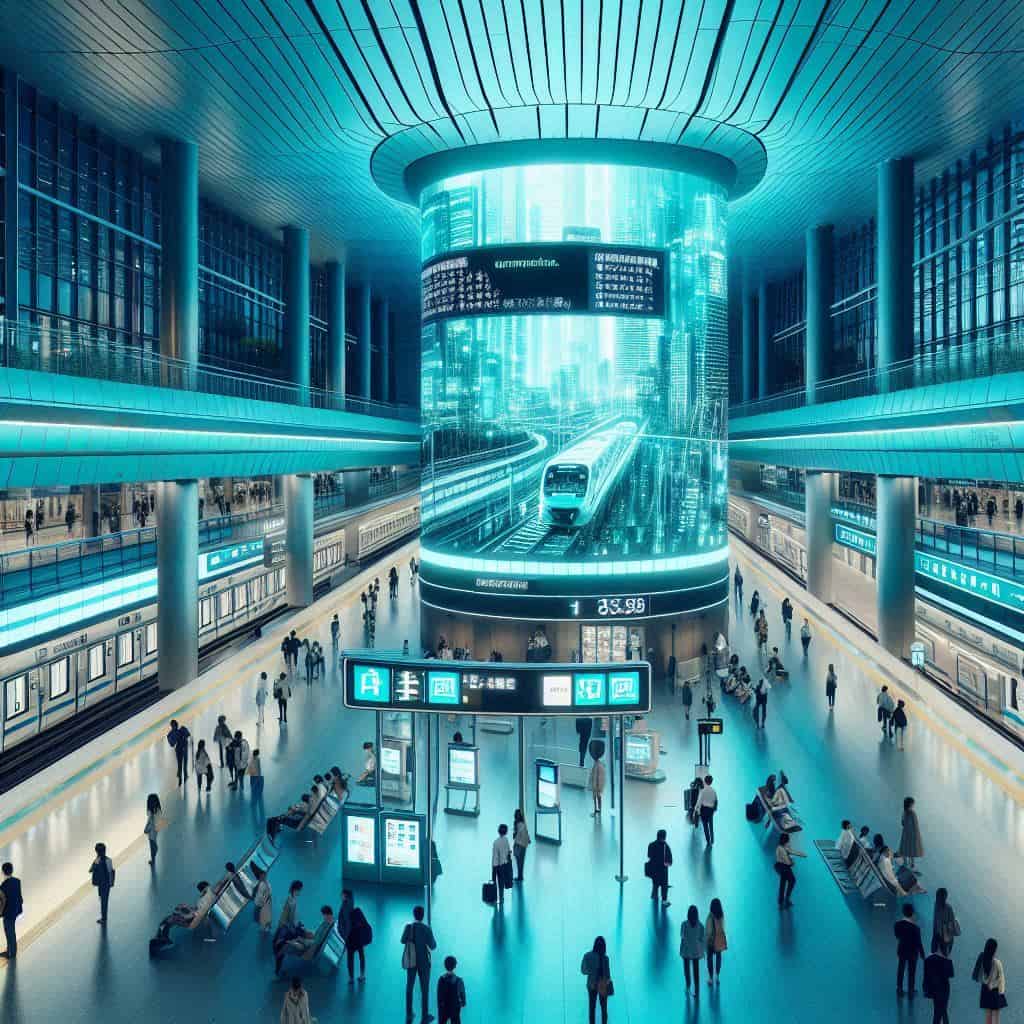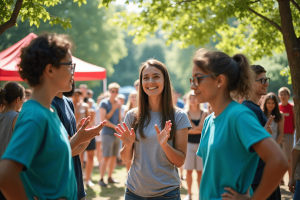
Deaf Accessibility in Public Spaces: What Still Needs to Be Done?
- Posted by Cicada Sign
- Categories Blog
- Date October 30, 2024
- Comments 0 comment
Imagine walking into a crowded subway station or a bustling airport. Announcements echo around you, informing you of delays, gate changes, or emergency situations. Now, imagine being Deaf or hard of hearing (HoH) in that same situation. How do you receive that critical information?
Public spaces, from transportation hubs to government buildings, are designed with accessibility in mind, but often prioritize the needs of people with physical disabilities over those who are Deaf or HoH. While strides have been made in recent years, there are still many gaps in accessibility that need to be addressed to make public spaces truly inclusive.
In this post, we’ll explore the current state of Deaf accessibility in public spaces, identify ongoing challenges, and discuss innovative solutions that can help create more inclusive environments.
1. The Current Landscape of Accessibility in Public Spaces
Public spaces are required by law in many countries, including the U.S., to provide accessibility for individuals with disabilities under regulations like the Americans with Disabilities Act (ADA). However, accessibility for Deaf and HoH individuals often remains an afterthought. This includes:
- Transportation Hubs: Many airports, train stations, and bus terminals rely heavily on auditory announcements to communicate essential information.
- Healthcare Facilities: Communication barriers in hospitals and clinics can result in missed or misunderstood critical health information.
- Retail & Hospitality: Shops, restaurants, and hotels often lack the means to communicate effectively with Deaf customers, impacting service quality and inclusivity.
These gaps make it challenging for Deaf individuals to fully participate in and benefit from public services and amenities.
2. What Are the Key Challenges?
A. Lack of Visual Announcements
Most public spaces still rely primarily on auditory announcements to communicate with the public. This poses a significant barrier for the Deaf and HoH community who may miss vital information in emergency situations, flight changes, or important facility updates.
B. Limited Access to Sign Language Interpreters
While hospitals and government buildings often have policies to provide interpreters, the actual implementation can be inconsistent. Long wait times, limited availability, and lack of awareness about Deaf communication needs create obstacles for accessible communication.
C. Inadequate Staff Training
Many staff members in public-facing roles, from receptionists to security personnel, lack basic training in Deaf awareness and communication strategies. This can lead to misunderstandings and, at worst, discrimination, as Deaf individuals may not receive the assistance they need.
D. Insufficient Use of Assistive Technologies
Though various assistive technologies exist—like real-time captioning, visual alert systems, and hearing loops—they are still rarely implemented in public spaces. When they are, they’re often limited to select locations, meaning accessibility can be inconsistent and unreliable.
3. Innovative Solutions for a More Accessible Future
To make public spaces truly inclusive, more than compliance with the law is required. Here are some solutions that can bridge the gap:
A. Real-Time Captioning and Visual Announcement Screens
Airports, train stations, and other transportation hubs should have screens providing real-time updates on flights, train arrivals, or delays, with visible emergency alerts. Captioning services can also be introduced in waiting areas or queues for public announcements.
B. Implementation of Video Relay Services (VRS)
Video Relay Services allow Deaf individuals to communicate with hearing people via sign language interpreters in real time. Installing VRS kiosks in locations like hospitals, government buildings, and airports can empower Deaf individuals to access information seamlessly.
C. Staff Training in Deaf Awareness
Instituting mandatory Deaf awareness training for employees in public service roles can make a significant difference. Training should include basic sign language, use of assistive tools, and understanding how to communicate effectively with Deaf and HoH individuals.
D. Integration of Mobile Apps for Deaf Accessibility
Mobile apps, such as Ava or Otter.ai, can provide live transcriptions for conversations and announcements. Public spaces can partner with app developers or promote these resources to help Deaf visitors access real-time information through their smartphones.
E. Expand Accessibility Features for Emergencies
Public spaces must prioritize visual alarm systems and clear, easy-to-understand signage. Additionally, emergency protocols should account for Deaf individuals, ensuring they receive immediate, life-saving information through visible alerts and on-site assistance.
4. Leading by Example: Successful Implementations
Some cities and public organizations are leading the way in Deaf accessibility, providing examples that others can emulate:
- Washington, D.C. Metro System: Recently implemented a visual alert system that displays real-time emergency updates and service changes on screens across its stations, making it easier for Deaf and HoH commuters to stay informed.
- Rochester, NY: Known for having one of the largest Deaf communities in the U.S., Rochester has made concerted efforts to create Deaf-friendly public spaces. Local businesses often feature accessible tools, and some even employ Deaf staff to improve service.
- Airports with Visual Paging Systems: Some major airports, like O’Hare in Chicago and LAX in Los Angeles, are implementing visual paging systems to display important announcements on screens, addressing one of the key accessibility barriers for Deaf travelers.
5. A Call for Comprehensive Accessibility
Creating Deaf-accessible public spaces isn’t just about meeting legal requirements—it’s about fostering a society where everyone, regardless of ability, can fully participate and feel welcome. As more cities and public venues work towards inclusivity, the Deaf community can look forward to a future where accessibility is more than just a checkbox; it’s a commitment to equal rights and respect.
At Cicada Sign, we champion the importance of accessible spaces for the Deaf and HoH communities. By continuing to spotlight these issues and pushing for improved accessibility standards, we strive to create a world where Deaf individuals can move freely, independently, and confidently in every public space.
—————————-
References for Further Reading
- ADA National Network – Understanding accessibility requirements for public spaces.
- National Association of the Deaf – Advocacy for improved public accessibility.
- Gallaudet University – Studies and insights into Deaf accessibility needs.

I Letter in ASL
"Creating Deaf-accessible spaces isn’t just about compliance—it’s about building a world where everyone feels welcome and supported."

"From real-time captioning to visual paging systems, let’s bridge the accessibility gap and make public spaces more inclusive for the Deaf community."



